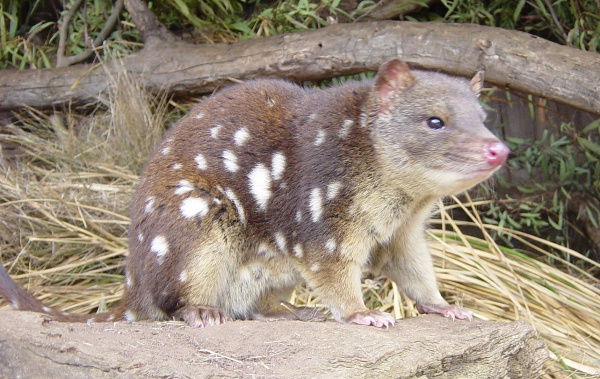Facts About Eastern Quoll, Eastern Native Cat
Quolls are captivating marsupials native to Australia and New Guinea. As nocturnal predators, they rest in dens during the day. Six species of quolls exist: four in Australia and two in New Guinea. Genetic studies indicate that quolls have been around for about 15 million years.
These marsupials are recognizable by their brown or black fur and distinctive pink noses. They vary in size, ranging from 300 grams to 7 kilograms. Quolls are predominantly solitary but gather during the winter mating season. A female quoll can give birth to up to 18 pups, although typically only six survive due to the limited number of teats available for feeding.
Quolls have an eclectic diet that includes smaller mammals, birds, lizards, and insects. They generally live for two to five years in the wild. Tragically, quoll populations have plummeted due to several factors such as the introduction of cane toads, predation by feral cats and foxes, urban development, and poison baiting. Conservation efforts are underway, including breeding programs in captivity supported by organizations like Rewilding Australia and Conjour in Tasmania.
Taxonomically, quolls belong to the genus Dasyurus, which includes six identified species. They face numerous threats from invasive species, habitat destruction, and poison baiting. To combat these challenges, various conservation initiatives have been launched, including captive breeding programs and reintroduction efforts across different regions.
Quolls display unique behaviors, including their carnivorous diet and nocturnal habits. They are solitary creatures, with males and females coming together only for mating. They mark their territories and even have communal latrine areas. Female quolls develop pouches for their young, with a gestation period of 21 days and the potential for up to 18 pups per litter.
Conservationists are diligently working to protect quolls through measures like fox control programs, captive breeding initiatives, and research on their distribution and threats. By addressing issues such as habitat loss, predation, and competition for resources, they aim to ensure the survival of these charismatic marsupials.
